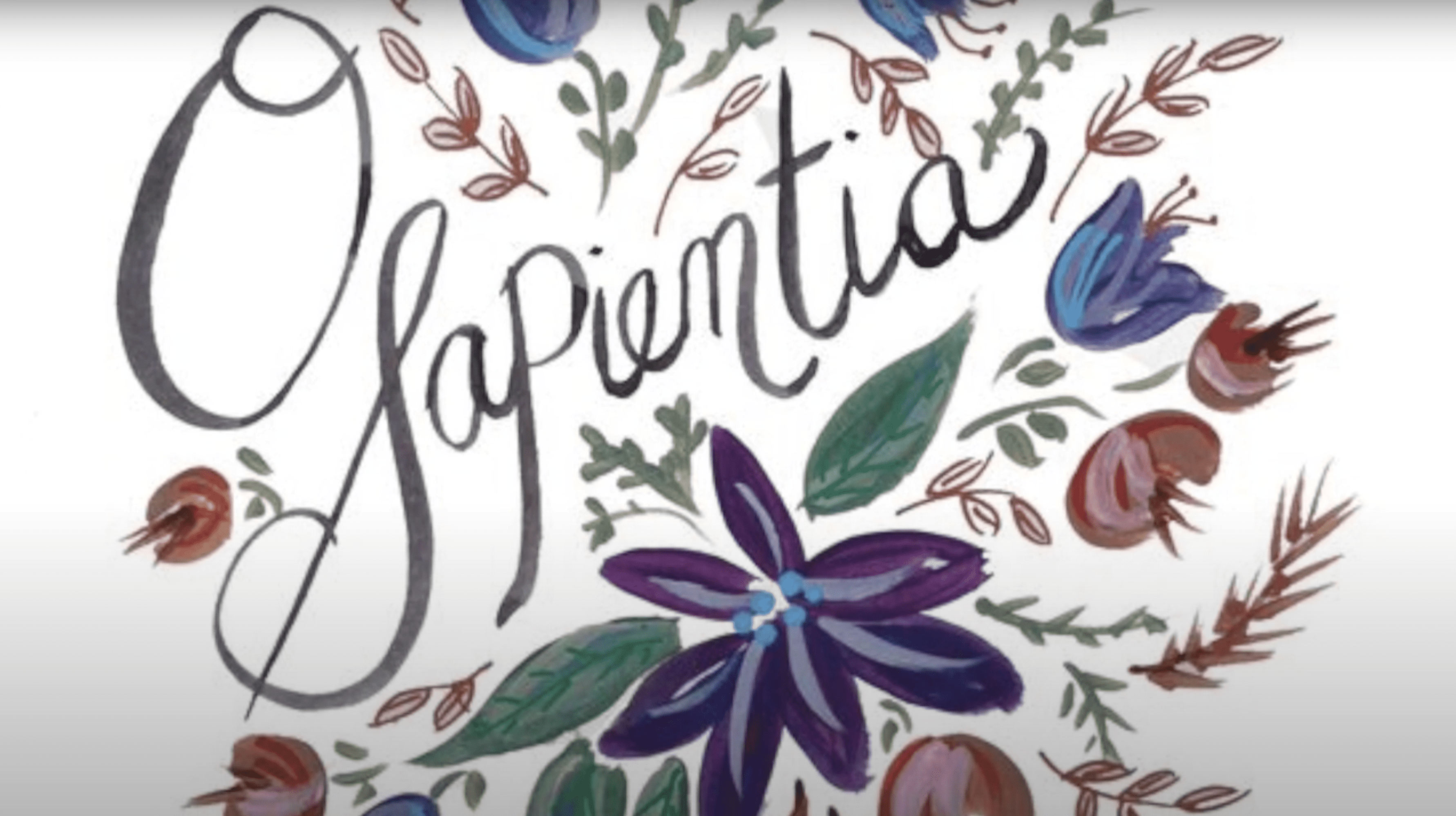Sacred Heart Church in Bloomfield launches video series on the ‘O’ antiphons
Every year Sacred Heart Religious Education under the direction of Nancy Plate, hosts a family faith morning for the entire religious ed program. With plenty of coffee, hot cocoa and donuts, our parish families build their Advent wreath together. In a normal year, we would have started with an opening prayer, and fellowship and there may have been one or two short presentations on the meaning of the Advent wreath, an aspect of the worship for the coming new liturgical year and a description of the Jesse tree.
In lieu of the opportunity to gather together for fellowship and faith activities outside of mass, we had to get a bit creative with the content presented to the community. That’s when Nancy asked me to do a video about “O Come, O Come Emmanuel”… and thus began our little venture into the recording of the O Antiphons. ‘Veni, Veni Emmanuel’, or as we know it better “O Come, O Come Emmanuel” is a modern adaptation of the great “O Antiphons” that are used for Vespers during the octave before Christmas.
An antiphon is a short sentence taken from scripture which is read before a longer scriptural passage and highlights the main point of the reading, or comments upon it. Every week, we sing the Responsorial psalm antiphon together, while the cantor chants the verses in between.
The “O” antiphons are of ancient origin, are so named because each of the sentences begins with “O” as an interjected word of calling upon God. The Roman Catholic Church has been singing the “O” Antiphons since at least the ninth century, almost 1,200 years. They are the antiphons that accompany the Magnificat canticle of Evening Prayer from Dec. 17-23. The Magnificat, you may recall is the declamation of Our Blessed Mother Mary upon her meeting with her cousin Elizabeth. After John the Baptist in the womb of Elizabeth leaps for joy upon the approach of the Virgin mother bearing the Savior in her own womb.
The “O Antiphons” taken as a whole, contain a hidden meaning, like a medieval secret code. If you put the antiphons back in their original order, the initial words of the actual antiphons in reverse order form an acrostic: O Emmanuel, O Rex, O Oriens, O Clavis, O Radix, O Adonai, O Sapientia. ERO CRAS can be loosely translated as “I will be there tomorrow”. Sung from Dec. 17, through Dec. 23, that is an especially fitting message, since Christ’s birth falls on the evening of the following day. Acrostic poetry in chant dates back to Ancient times, from our roots in the Jewish tradition which often used word puzzles and acrostic poems to cement important theological messages into the minds of the faithful. As the names we use for the Messiah in the “O Antiphons” come from the names given by the prophets and patriarchs of the Old Testament, it is fitting that this word puzzle appears in our Catholic heritage leading up to the fulfillment of all those prophecies in the birth of our Savior, Jesus Christ. Similarly, they frame the text of the Magnificat, which too has its ties scriptural references especially to Abraham and progeny.
The first six videos give a brief 1-minute explanation of the scriptural basis for each of the antiphons, and ties them together in to the fulfillment of these prophecies in the Incarnation at Christ’s birth in human form, and proceed with the singing of the ancient chant accompanied by string bass drone. The singers/bassist are the three professional musicians employed at Sacred Heart Church. The seventh video gives the same 1-minute explanation this time narrated by our pastor, Fr. Jim Brown, but includes the chanted Magnificat with the final repetition of the antiphon as it would be sung in the original monastic setting.
Jennifer Behnke is the director of music at Sacred Heart Church in Bloomfield.



